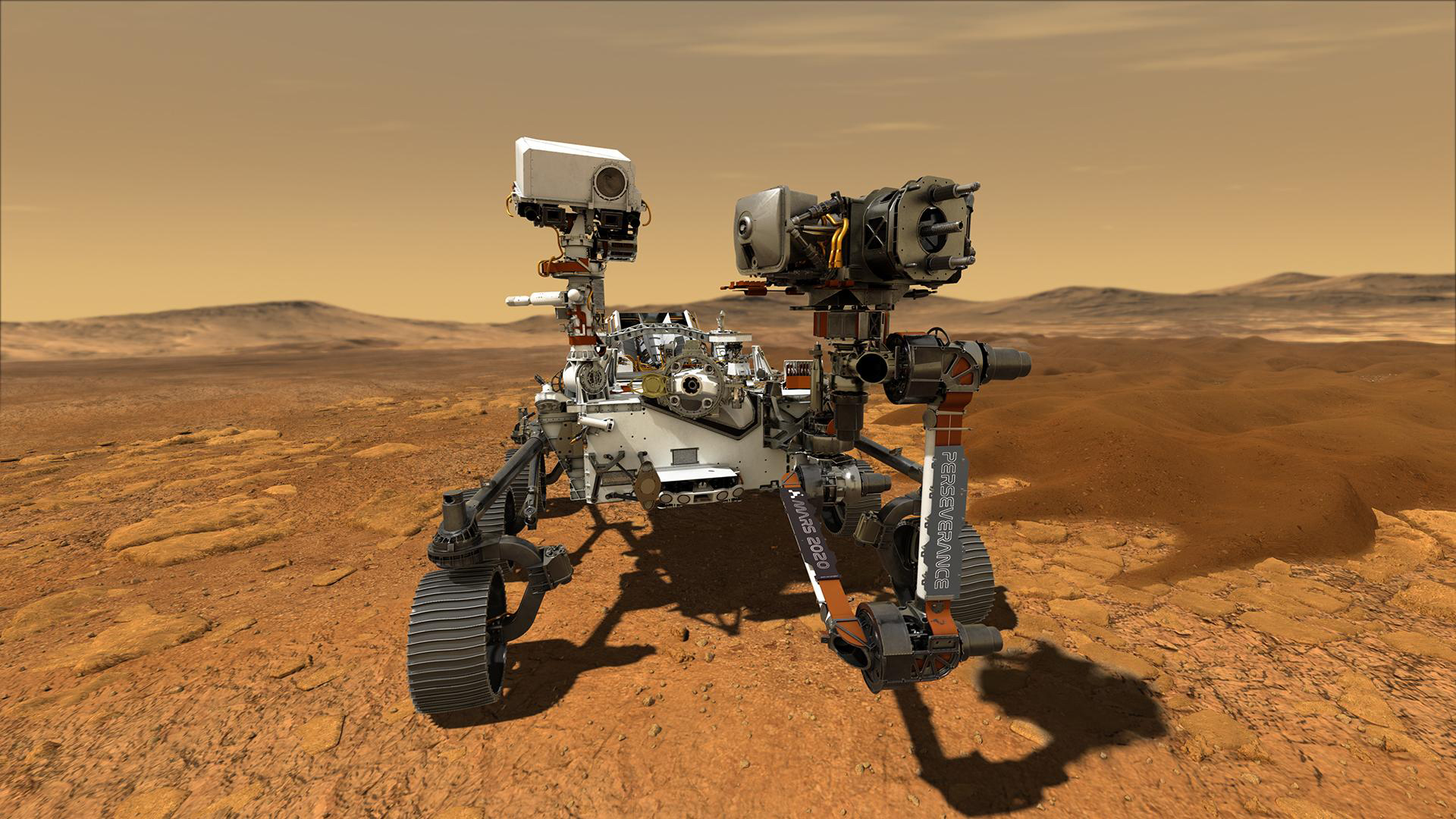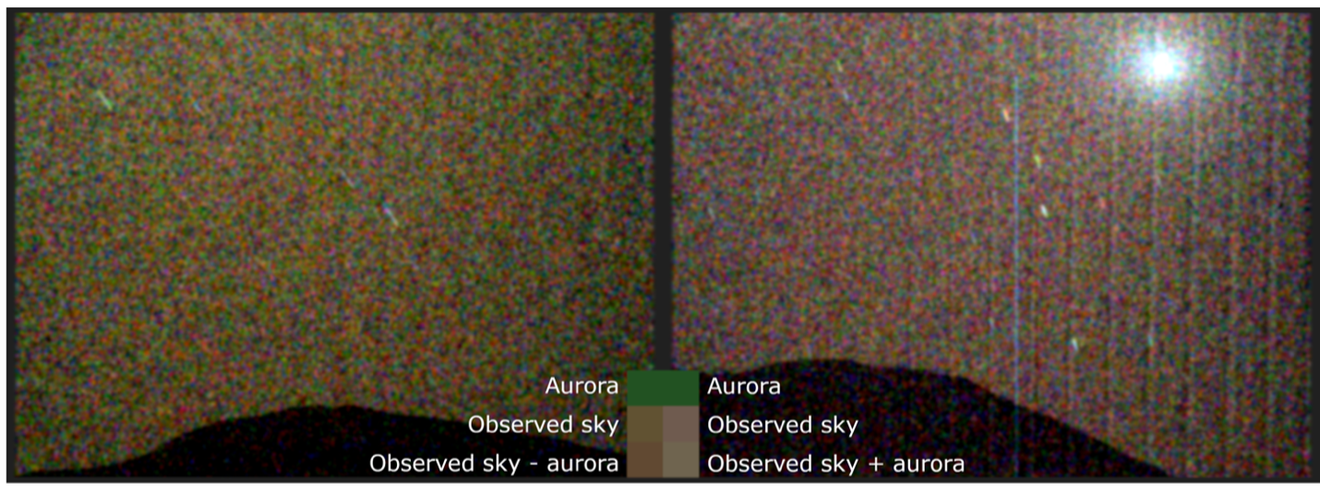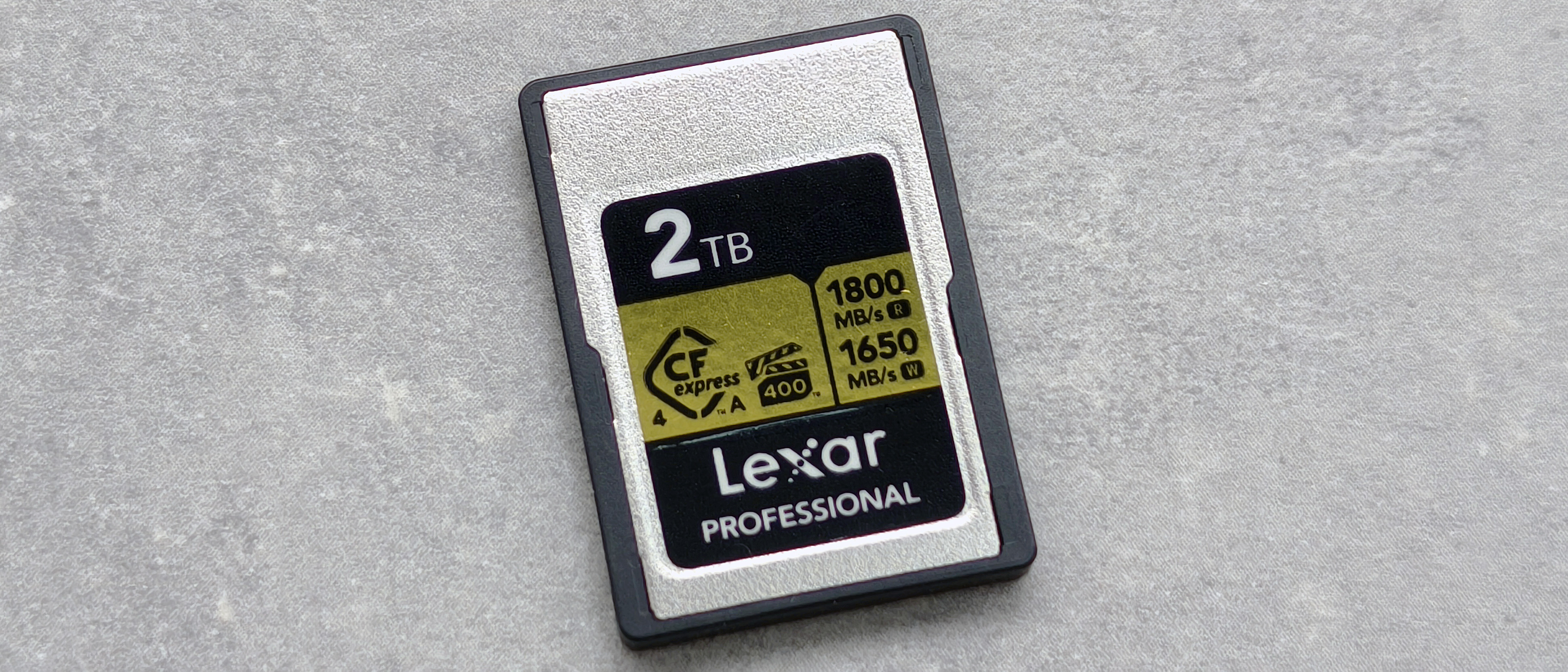Mars doesn’t have magnetic poles – but the planet still has auroras. Mars rover captures the first-ever photo of the aurora on another planet
The aurora on Mars is a different type, but shares the same green color

Mars doesn’t have magnetic poles like Earth does, but that doesn’t stop the red planet from experiencing the night sky phenomenon known as the aurora. The Mars rover Perseverance made history by taking the first-ever photograph of an aurora from another planet, following a March 15 solar flare.
The discovery confirms what scientists have theorized for years: that if astronauts ever did land on the fourth planet from the sun, they could still see auroras caused by mass solar ejections.
Martian auroras have been previously observed from orbit using ultraviolet light equipment, but the image captured in March is the first time that auroral activity has been observed from on the planet itself, and with visible light camera equipment.
The photograph shows a grainy green sky – the green being the auroral activity. NASA shared the photo this week alongside a standard photo of the night sky, which lacks the green color, for comparison. The image was captured from the rover Perseverance, which is led by the NASA Jet Propulsion Laboratory.
Importantly, the Martian aurora shouldn’t be referred to as the Northern Lights or Southern Lights.
NASA says the green light in the photograph is an entirely different kind of aurora. Because Mars doesn’t have magnetic poles like Earth does, the planet won’t experience the same type of aurora that is caused by solar particles being drawn to the magnetic poles, where they interact with gases in the atmosphere.
The aurora captured by Perseverance, NASA explains, was called a solar energetic particle or SEP aurora. This type of aurora happens when particles from a solar flare interact with the Martian atmosphere. With no magnetic fields funneling the light show to the north and south poles, this SEP aurora creates a glow across the entire night sky.
The best camera deals, reviews, product advice, and unmissable photography news, direct to your inbox!
While the Martian SEP auroras were previously discovered in 2014, the photograph proves that the green auroras could be observed from Mars’ surface.
Timing the Perseverance’s camera with solar activity was a multi-team effort, led by researchers from the University of Oslo in Norway in a study in Science Advances. Elise Knutsen, a postdoctoral researcher from the university, said her team strategized the optical angle for the rover’s spectrometer and camera to observe the aurora.
But like on Earth, timing is essential in spotting any auroral activity. Knusten’s team worked with NASA’s Moon to Mars Space Weather Analysis Office and the Community Coordinated Modeling Center for real-time analysis of solar activity.
Space physicist and MAVEN (Mars Atmosphere Volatile Evolution) team member Christina Lee, of the University of California, Berkeley, spotted the solar storm, flagging the activity on the Mars Space Weather Alert Notification system.
A few days after the March 15 solar activity, the rover was able to capture the image of the green aurora as the solar activity reached the planet. The presence of solar activity was confirmed by the MAVEN SEP instruments, as well as data from the European Space Agency.
While Mars experiences a different type of aurora, the 557.7 nm emission measured by the Mars instruments is the same emission level that causes the green color during Earth’s Northern and Southern Lights.
You may also like
For more Mars rover inspiration, check out this solar eclipse captured from Mars. Or, learn how to photograph the aurora (from Earth, of course!) or what astrophotography events to photograph for May.

With more than a decade of experience writing about cameras and technology, Hillary K. Grigonis leads the US coverage for Digital Camera World. Her work has appeared in Business Insider, Digital Trends, Pocket-lint, Rangefinder, The Phoblographer, and more. Her wedding and portrait photography favors a journalistic style. She’s a former Nikon shooter and a current Fujifilm user, but has tested a wide range of cameras and lenses across multiple brands. Hillary is also a licensed drone pilot.
You must confirm your public display name before commenting
Please logout and then login again, you will then be prompted to enter your display name.

